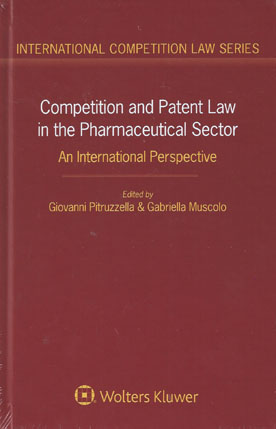
Competition and Intellectual Property Law in the Pharmaceutical Sector deals with the apparent contradiction between intellectual property (IP) rights (particularly patents) and competition law, with a focus on the pharmaceutical sector: in its aim to promote innovation and long-term competition, the patent system in fact provides a temporary right to exclude.
The book explores the possibility of adjusting patent policies to better account for the trade-off between static and dynamic welfare and minimize the risks of anticompetitive behaviour, which happens with the misuse of patents.
This book, the first to deal with this issue on a global basis, tackles the clashes of case law by Courts and antitrust enforcement by competition authorities that undermine the predictability of solutions to this problem and increase the risk of fundamental rights violations and excessive transitional costs for enterprises.
Examining the approaches to competition and IP regulation in fourteen leading jurisdictions, the analysis provides a comparative perspective on recent relevant regulations and case law in the pharmaceutical sector.
Thirty-one contributions by internationally known experts in both fields – judges in specialized courts, chairmen and board members of national competition authorities, and well-known scholars and practitioners – focus on the salient topics and on the interplay between patent law and competition law, with an insight into the human rights issues that arise.
What’s in this book:
Among the topics covered are the following:-
The book’s ultimate and challenging proposal identifies the pharmaceutical sector as a starting point for reshaping a more procompetitive and harmonized system of regulation. Comparing different systems, the book takes the first step in moving towards a more levelled regulation in the pharmaceutical field.
It helps in reducing the lack of uniformity among different legal systems and the clashes of jurisprudence in Court decisions that undermine the predictability of solutions in arising conflicts and increase the risk of violation of Fundamental Rights for individuals and the transitional costs for enterprises. It focuses on IP and competition law related issues and on the interplay between Patent Law and Antitrust Law and Human Rights in the field.
How this will help you:
As a detailed comparative analysis that clarifies current trends worldwide in regulation and jurisprudence at the crossroads between IP and competition law, the book suggests new ground for steps forward in an essential area for modern economies.
In its dedication to striking the right balance between static (short-term) and dynamic (long-term) efficiency, and thus opening the way to a more balanced approach and a higher standard of harmonization in the pharmaceutical sector, this book has no peers. It will be of great value to lawyers, economists, and policymakers in both fields of IP and competition law.